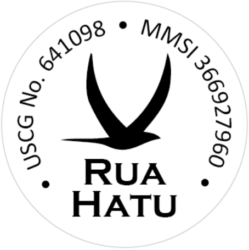We safely return to Panama and decide on our next steps as the season for sailing south has come to a close.
We returned to Panama with stops at our favorite spots in the Pearl Islands on the way to Panama City. The rainy season has officially begun which hides the broiling sun behind rain clouds about half of the time. However, when the sun does come out and the previous night’s rain evaporates you feel like you’re trapped in a sauna. The vegetation is turning from crispy brown to soft greens again.
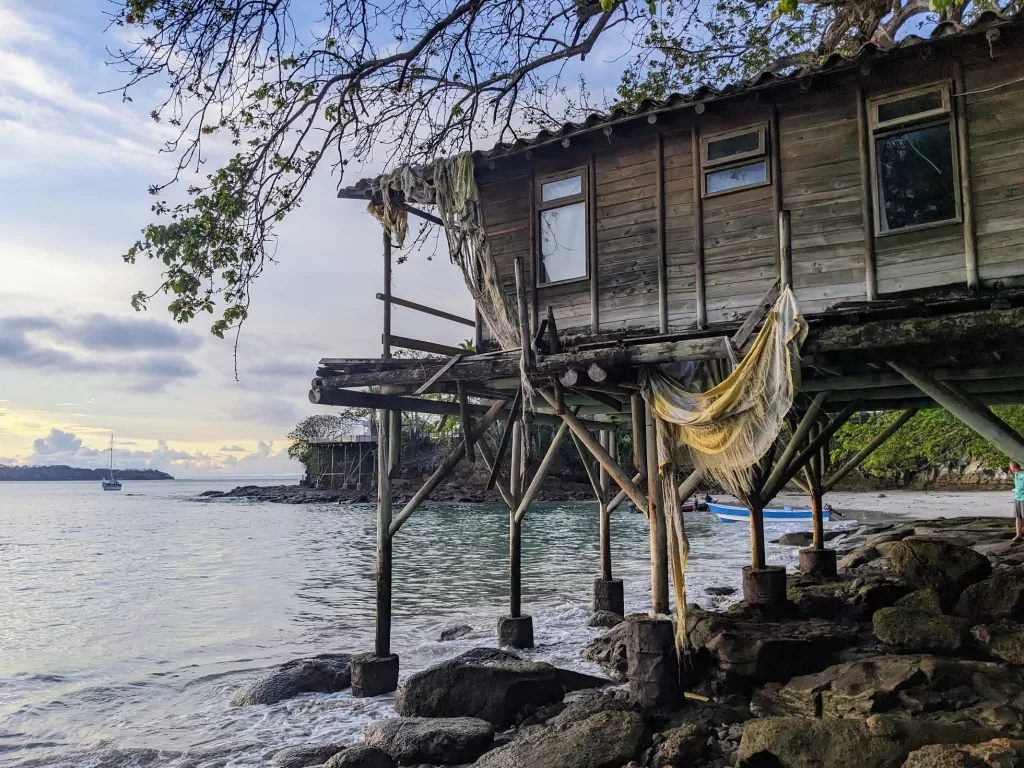
What’s next?
After catching up on much needed sleep we now had to decide what we should do next. Heading south to Chile wasn’t really an option anymore as replacing the standing rigging, all the wire rope onboard, would take us at least two months, considering we had to have it imported from the USA. So we went back to the drawing board and decided to cross the Panama Canal to the Caribbean, find a marina where we could post up for a few months and work on our once again very long to-do list.
Since we were still a bit demotivated, we decided to hire an agent to deal with the canal transit. From the day of contacting the agent until we were scheduled to cross was only one week. Currently Panama is considered to be in a drought, so traffic through the canal is very light as ships have to have reduced draft.
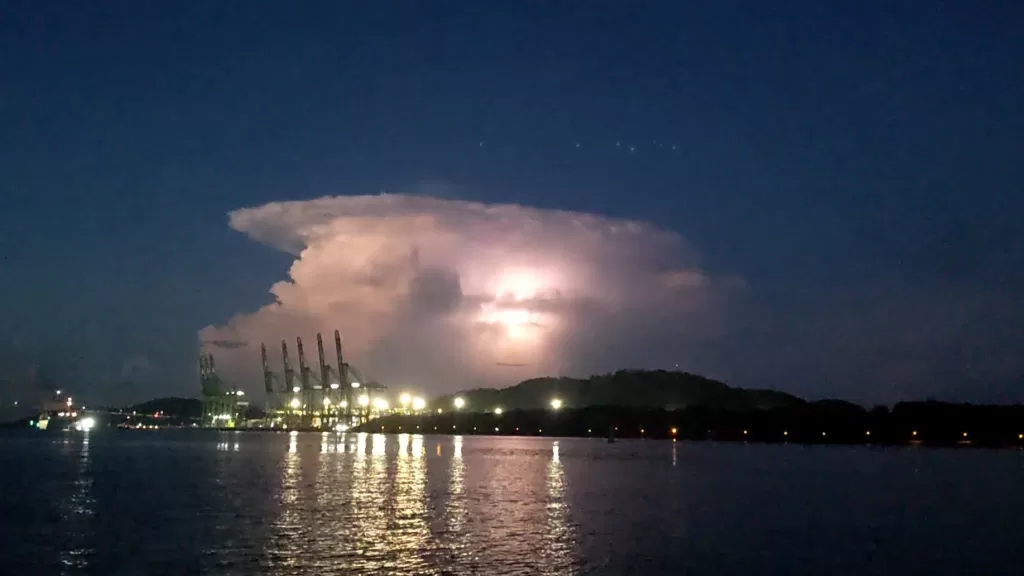
The transit begins
Our odyssey through the canal began on Monday June 12. After loading up the boat with six huge fenders and five very long floating lines, we picked up our line handlers that would help us go through the locks. The canal authority requires each small vessel to have four line handlers, the captain steering the boat, and a canal advisor (similar to a pilot) to guide you through the process of transiting the locks and the narrow canal channels.
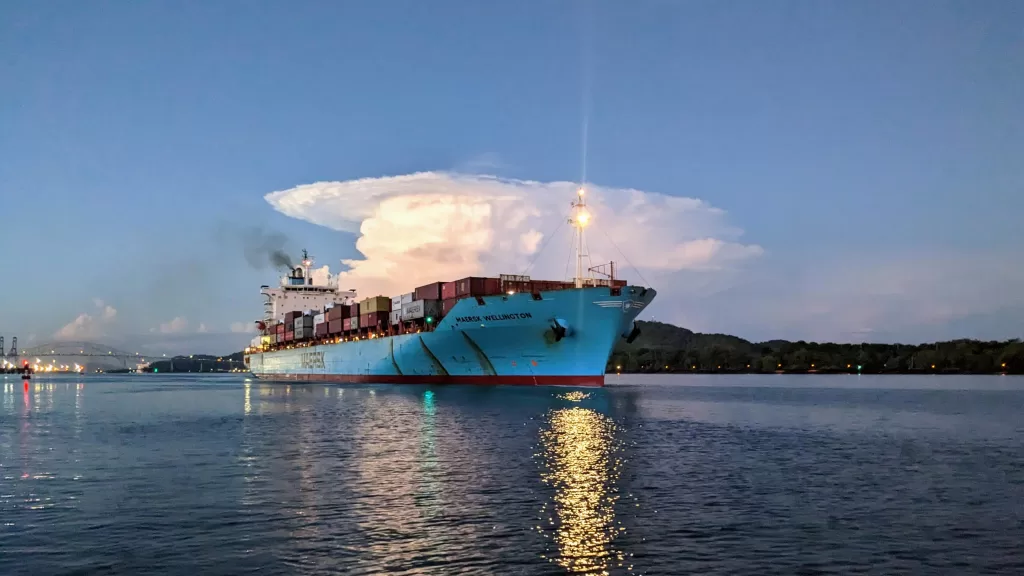
We departed the anchorage at 3:30 on Monday morning and the advisor was dropped off by the pilot boat at 3:45. We made great time to the first lock but had to wait about two hours until the container ship that was scheduled to go through with us arrived and we could proceed. Then we found out we would raft up (tie to) another, though much larger, sailing yacht called Acadia. Since Acadia was much longer than us, we didn’t have to do any work with the lines. All lines got passed on to Acadia and their crew were busy tightening and easing the lines as the locks were filled with water as we slowly rose to the level of Gatun Lake.
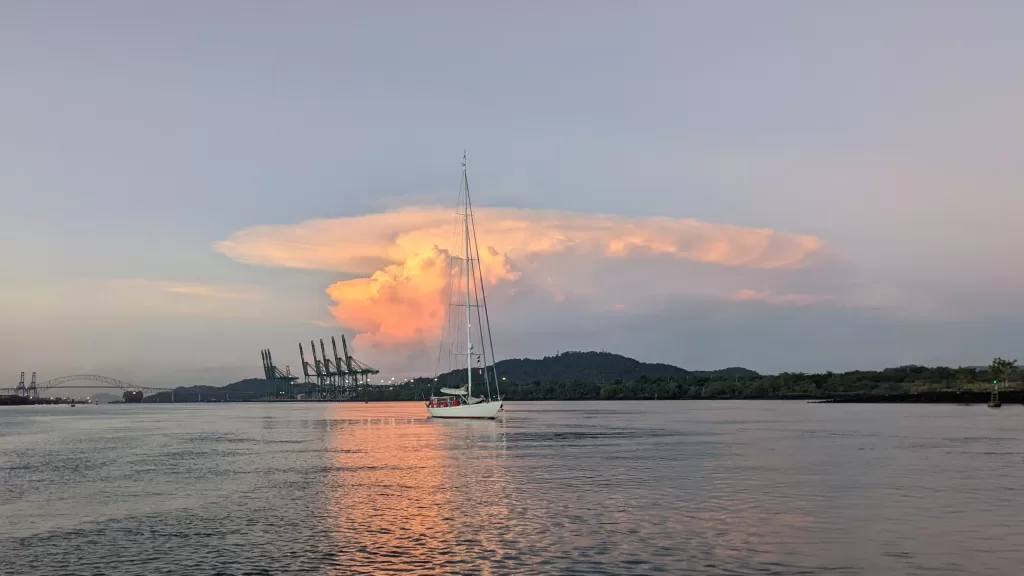
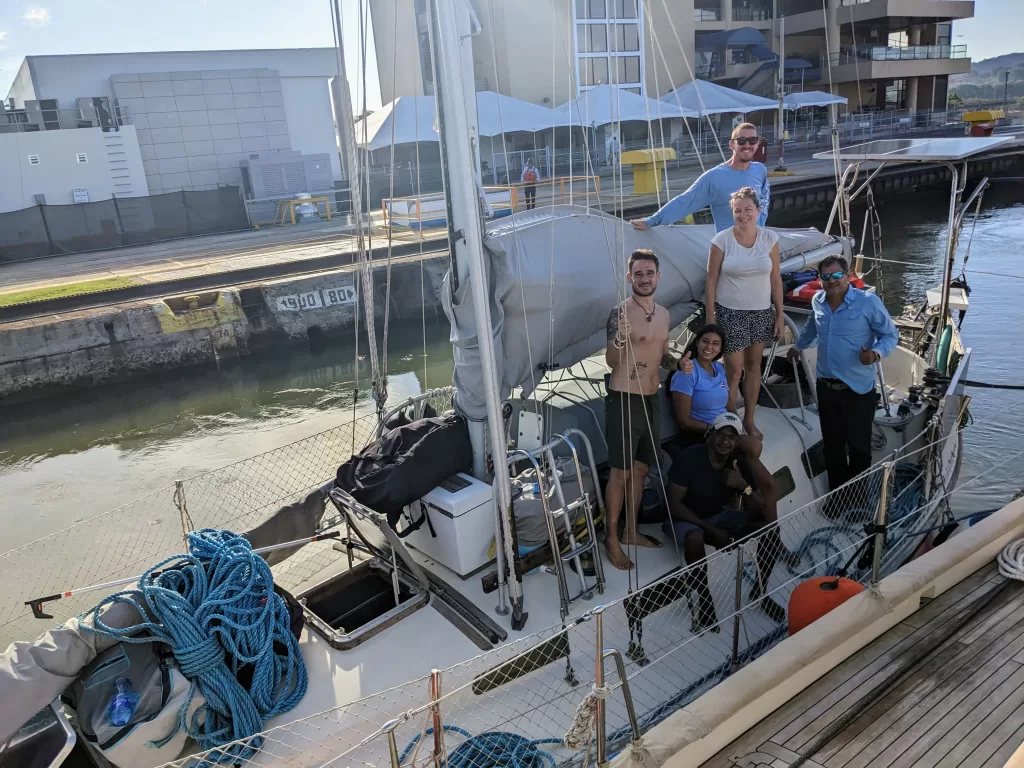
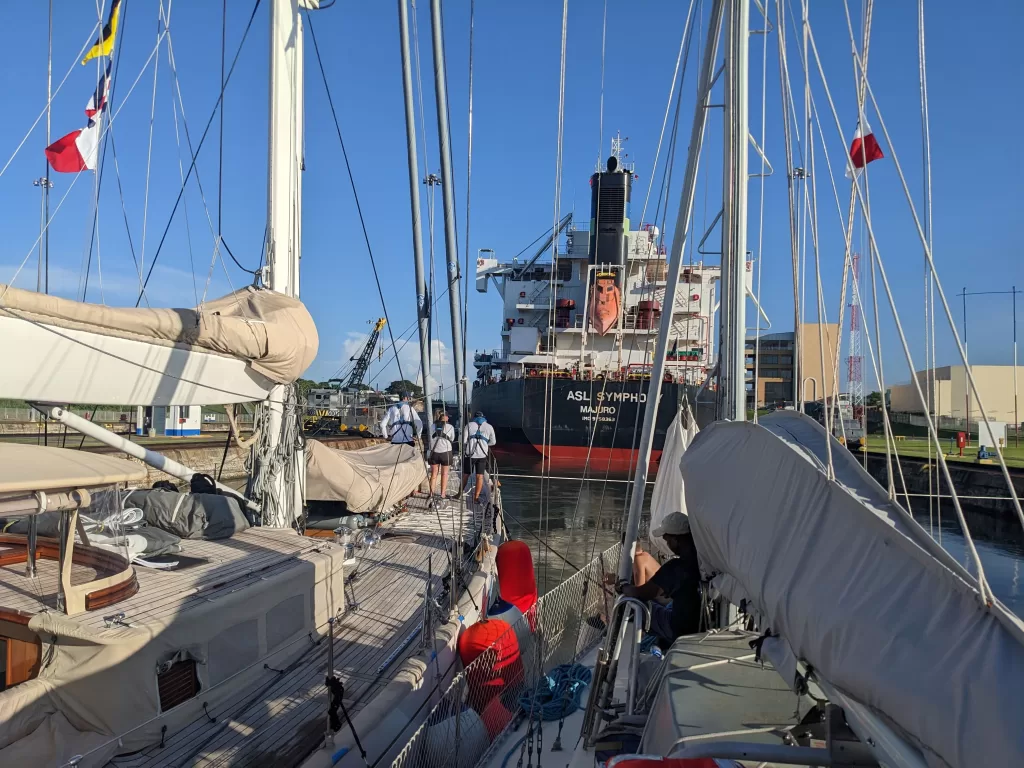
After the first three locks, Miraflores and Pedro Miguel, we proceeded through the canal system dodging big ships on their way between the Atlantic and Pacific locks. Once we reached Gatun Lake we were told to tie up to one of the mooring buoys where we stayed until the following day. The advisor bid us farewell and we made dinner and jumped in the lake for a refreshing swim, trying to ignore the possibility of encountering a crocodile.
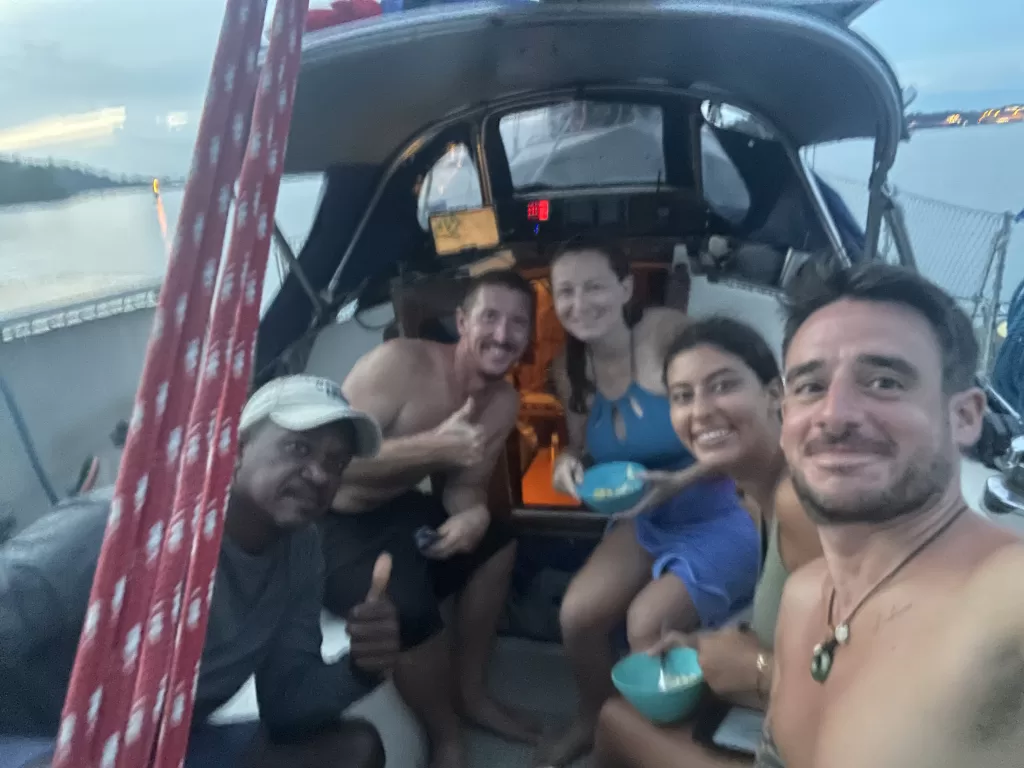
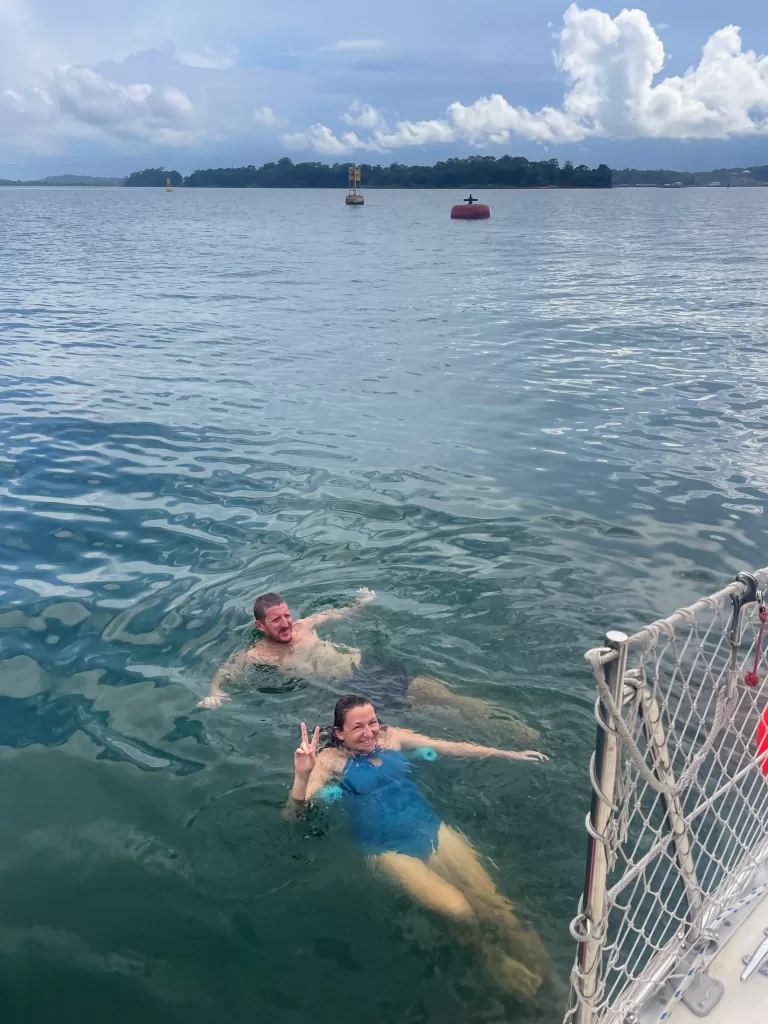
In our next post we will describe our stay on Gatun Lake, passing through the Atlantic side locks, and our arrival at Shelter Bay.

